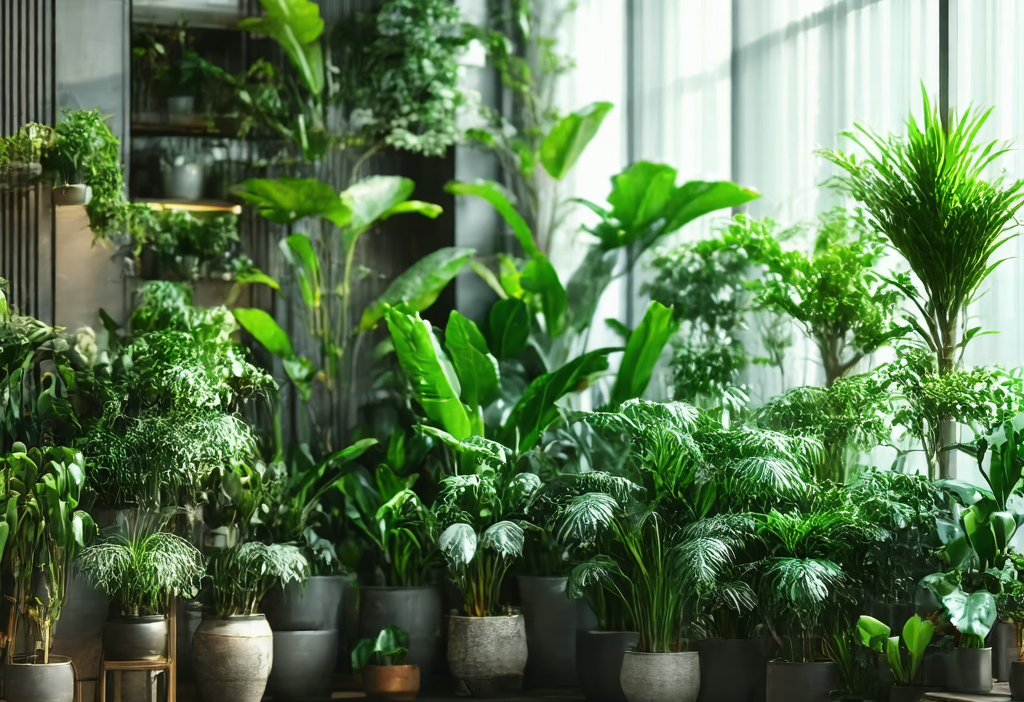Top 10 Low-Maintenance Plants for Busy Professionals
If you’re a busy professional looking to add some greenery to your life but don’t have the time or energy for high-maintenance plants, you’ve come to the right place. In this blog post, we’ll explore low-maintenance plants that are perfect for your lifestyle. Whether you’re living in an apartment or have a small outdoor space, these plants will thrive with minimal effort. Let’s dive into the world of easy-care flora!
Why Low-Maintenance Plants Are Perfect for Busy Professionals?
Let’s face it—juggling a demanding career and personal life can be exhausting. Adding plant care to your to-do list might seem like just another task, but it doesn’t have to be. Low-maintenance plants are designed to survive with minimal attention, making them ideal companions for those who want to enjoy the benefits of greenery without the stress.
These plants not only beautify your space but also improve air quality and boost mood. They’re a great way to bring a piece of nature indoors, even if you’re constantly on the go. Plus, they require less time and effort than their high-maintenance counterparts, allowing you to focus on what truly matters.
Top 10 Low-Maintenance Plants You Should Try
If you’re ready to bring some life into your space but don’t know where to start, here’s a list of the best low-maintenance plants for busy professionals:
- Zebra Plant (Haworthia Zebra): This succulent is a great choice for those who forget to water their plants regularly. It thrives in bright indirect light and requires minimal watering, making it perfect for a desk or windowsill.
- Snake Plant (Sansevieria Trifasciata): Known for its air-purifying qualities, the snake plant is incredibly resilient. It can tolerate low light and infrequent watering, making it an excellent option for any room in your home.
- Spider Plant (Chlorophytum Comosum): This plant is not only easy to care for but also produces small plantlets that you can propagate and share with friends. It prefers indirect light and moderate watering, making it a great choice for a kitchen or living area.
- Peperomia (Peperomia spp.): With its unique, heart-shaped leaves, the peperomia is both attractive and low-maintenance. It prefers bright light but can adapt to lower light conditions if necessary.
- Pothos (Epipremnum aureum): A popular choice for hanging baskets or cascading planters, pothos is known for its ability to thrive in low light and require minimal watering. Plus, it’s one of the best plants for purifying indoor air.
- Succulents: Succulents are a broad category of plants that store water in their leaves or stems, making them drought-tolerant. They come in various shapes and sizes, so you’re sure to find one that fits your style. Just make sure they get plenty of sunlight and well-draining soil.
- Aloe Vera: Not only does aloe vera add a touch of tropical flair to your space, but it also has practical uses. Its gel can be used for soothing sunburns, making it a functional addition to any home or office.
- ZZ Plant (Zamioculcas zamiifolia): The ZZ plant is known for its ability to survive in low light and neglect. It’s perfect for those who don’t have much time to tend to their plants but still want a lush, green accent in their space.
- Peace Lily (Spathiphyllum): Despite its delicate appearance, the peace lily is surprisingly resilient. It thrives in low light and only needs to be watered when the soil is dry. Plus, it’s one of the best plants for removing toxins from the air.
- Orchids: Orchids might seem like high-maintenance plants, but there are varieties that are surprisingly easy to care for. They prefer bright, indirect light and require watering only once a week or so. Plus, they add a touch of elegance to any space.
Tips for Success with Low-Maintenance Plants
Even though these plants are low-maintenance, there are still some tips and tricks to help them thrive:
- Choose the Right Potting Mix: Use a well-draining potting mix to prevent root rot, especially for succulents and cacti.
- Provide Adequate Light: Most low-maintenance plants thrive in bright indirect light. If your space doesn’t get much natural light, consider using grow lights.
- Water Sparingly: Overwatering is a common mistake with low-maintenance plants. Always check the soil before watering—most prefer their soil to dry out slightly between waterings.
- Fertilize Occasionally: While these plants don’t require frequent feeding, giving them a balanced fertilizer once or twice a year can help them stay healthy and vibrant.
- Keep an Eye Out for Pests: Even low-maintenance plants can fall victim to pests like spider mites or mealybugs. Regularly inspect your plants and treat any infestations promptly with insecticidal soap or neem oil.
Why These Plants Work Well for Busy Professionals
Low-maintenance plants are the perfect solution for busy professionals who want to enjoy the benefits of greenery without dedicating hours to plant care. They’re resilient, adaptable, and require minimal attention, making them ideal for those with hectic schedules. Plus, they bring a host of benefits to your space, from improving air quality to boosting mood and productivity.
Whether you’re looking to add a touch of green to your office or brighten up your living space, these plants are the perfect choice. They’re easy to care for, come in various shapes and sizes, and can adapt to different lighting conditions, making them versatile additions to any room.
Conclusion
If you’re a busy professional who wants to add some greenery to your life but doesn’t have the time or energy for high-maintenance plants, these low-maintenance plants are the way to go. They’re resilient, adaptable, and require minimal attention, making them ideal companions for those with hectic schedules. Plus, they bring a host of benefits to your space, from improving air quality to boosting mood and productivity.
So why wait? Start shopping for some low-maintenance plants today and enjoy the many benefits they have to offer!


